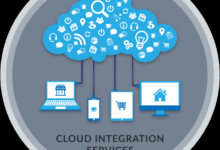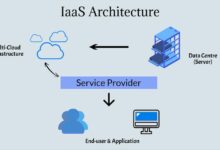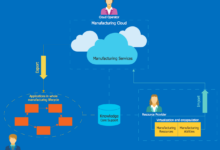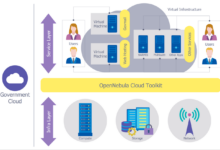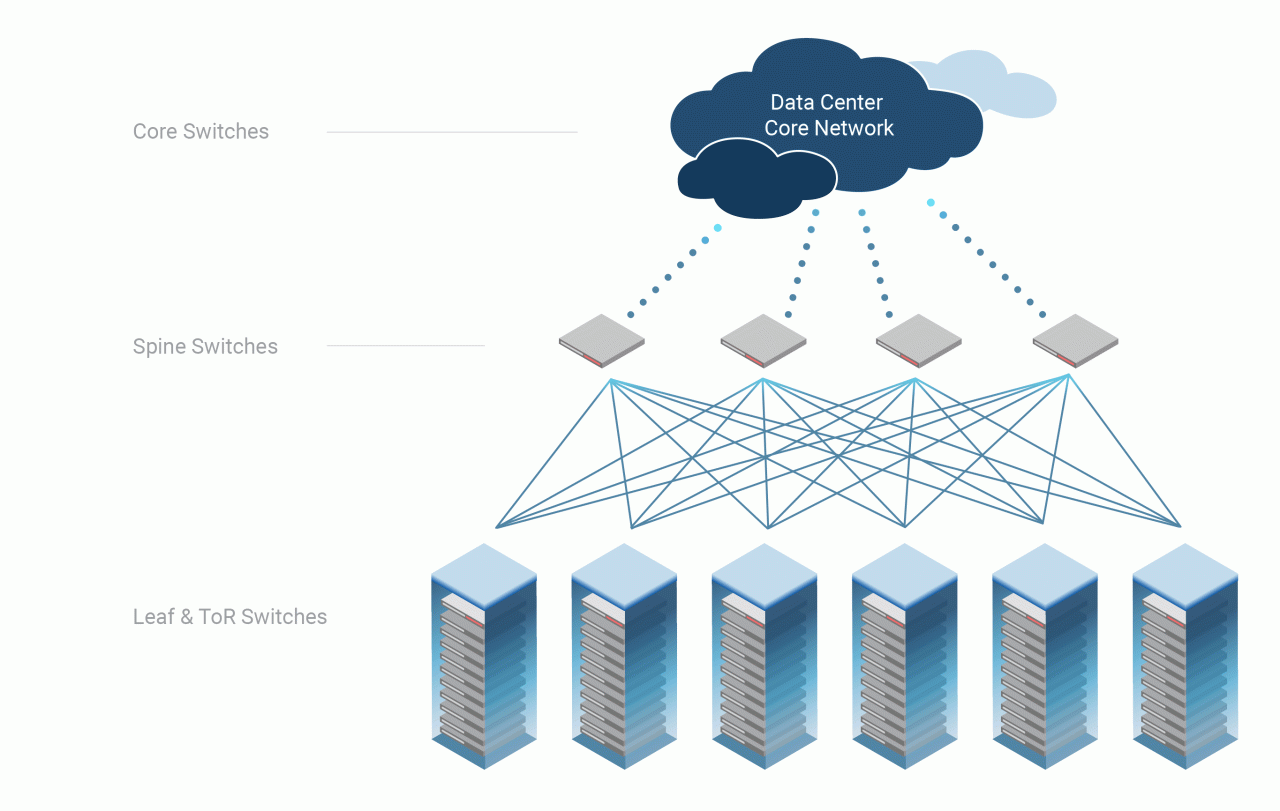Unlock the Power of AI for Seamless Cloud Networking

AI-powered cloud networking solutions are revolutionizing network management, offering unparalleled agility, efficiency, and security. Dive into the world of AI-driven networking and discover its transformative potential for your business.
With AI at the helm, cloud networking solutions evolve into intelligent systems that proactively adapt to changing demands, optimize performance, and safeguard against threats, empowering businesses to thrive in the digital age.
List the key challenges faced by traditional cloud networking solutions.

Traditional cloud networking solutions face several key challenges, including:
- Complexity:Traditional cloud networking solutions are often complex and difficult to manage, requiring a high level of expertise.
- Scalability:Traditional cloud networking solutions can be difficult to scale to meet the needs of growing businesses.
- Security:Traditional cloud networking solutions can be vulnerable to security threats, such as DDoS attacks.
- Cost:Traditional cloud networking solutions can be expensive to implement and maintain.
Key Features of AI-powered Cloud Networking Solutions
AI-powered cloud networking solutions offer a range of features that can help organizations improve their network management and optimization. These features include:
- Automated network management: AI can automate tasks such as network configuration, provisioning, and monitoring, freeing up IT staff to focus on other tasks.
- Network optimization: AI can analyze network traffic patterns and identify areas for improvement, such as by optimizing routing and traffic patterns.
- Improved network security: AI can detect and mitigate security threats in real time, such as by identifying and blocking malicious traffic.
- Reduced costs: AI can help organizations reduce costs by automating tasks and improving network efficiency.
- Increased agility: AI can help organizations respond quickly to changing business needs, such as by automatically provisioning new network resources.
Examples of How AI Enhances Network Management and OptimizationHere are some examples of how AI can be used to enhance network management and optimization:
- AI can be used to automatically configure new network devices, such as routers and switches.
- AI can be used to monitor network traffic in real time and identify potential problems, such as congestion or outages.
- AI can be used to optimize network performance by adjusting routing and traffic patterns, such as by load balancing traffic across multiple paths.
- AI can be used to detect and mitigate security threats in real time, such as by identifying and blocking malicious traffic.
- AI can be used to provide insights into network usage and performance, such as by identifying trends and patterns.
Benefits of AI-powered Cloud Networking Solutions
AI-powered cloud networking solutions offer a range of advantages that can significantly enhance the performance, efficiency, and security of your network.
Here are some of the key benefits:
Improved Network Performance
- AI-powered solutions can optimize network traffic flow, reducing latency and jitter, and improving overall network performance.
- By analyzing network data in real-time, AI can identify and resolve network issues before they impact performance.
- AI can also predict and prevent network congestion, ensuring that critical applications always have the bandwidth they need.
Increased Efficiency
- AI can automate many network management tasks, freeing up IT staff to focus on more strategic initiatives.
- AI can also help to identify and eliminate inefficiencies in network operations, saving time and money.
- For example, AI can optimize network configurations to reduce power consumption and improve energy efficiency.
Enhanced Security
- AI can help to detect and mitigate security threats in real-time, protecting your network from cyberattacks.
- AI can also identify and block malicious traffic, preventing it from entering your network.
- By continuously monitoring network activity, AI can help to identify and prevent security breaches.
Challenges of AI-powered Cloud Networking Solutions
Implementing and managing AI-powered cloud networking solutions pose several challenges:
Data Collection and Analysis
AI models rely on large datasets for training and analysis. Collecting, cleaning, and organizing data from various sources can be complex and time-consuming.
Model Development and Training
Developing and training AI models requires specialized expertise in machine learning and data science. Finding qualified professionals and investing in training can be challenging.
Integration with Existing Infrastructure
Integrating AI-powered cloud networking solutions with existing infrastructure can be complex, requiring careful planning and technical expertise.
Security and Privacy Concerns
AI systems can handle sensitive data, raising concerns about security and privacy. Implementing strong security measures is crucial to protect against unauthorized access and data breaches.
Strategies for Overcoming Challenges
Organizations can overcome these challenges by:
- Establishing a data governance framework to ensure data quality and consistency.
- Investing in machine learning and data science expertise to build and maintain AI models.
- Partnering with cloud providers and vendors for support with data collection, analysis, and integration.
- Implementing robust security measures, such as encryption, authentication, and authorization.
Organizations like Google Cloud and Amazon Web Services (AWS) have successfully overcome these challenges. They have invested in data infrastructure, machine learning expertise, and security measures to deliver AI-powered cloud networking solutions.
Impact on the Future of Networking
AI-powered cloud networking solutions are revolutionizing the networking landscape, enabling:
- Automated network management and optimization
- Improved network performance and reliability
- Enhanced security and threat detection
- Personalized and tailored network experiences
As AI technology continues to advance, we can expect even more transformative applications in the future of networking.
Design Considerations for AI-powered Cloud Networking Solutions

Designing and implementing AI-powered cloud networking solutions require careful consideration to ensure optimal performance and effectiveness. Here are some key guidelines to follow:
Network Architecture
- Design a network architecture that can accommodate the demands of AI-powered networking, including high bandwidth, low latency, and support for multiple cloud services.
- Implement a software-defined networking (SDN) approach to provide flexibility and programmability for AI-powered networking.
Data Collection
- Collect a wide range of data from the network, including traffic patterns, device behavior, and application performance.
- Use a variety of data collection methods, such as packet capture, flow analysis, and telemetry.
- Ensure data is collected in a structured and consistent manner to facilitate AI model training and analysis.
Model Selection
- Select AI models that are appropriate for the specific networking challenges you are trying to address.
- Consider using a combination of supervised and unsupervised learning models to achieve optimal results.
- Continuously monitor and evaluate model performance to ensure accuracy and effectiveness.
AI Algorithms for Cloud Networking
AI algorithms are a fundamental component of cloud networking solutions, providing the ability to automate network management tasks, optimize network performance, and improve security. Different AI algorithms are used for specific network management tasks, each with its strengths and weaknesses.
The choice of AI algorithm for a particular task depends on factors such as the size and complexity of the network, the types of traffic being handled, and the desired level of automation. Some of the most common AI algorithms used in cloud networking solutions include:
Machine Learning Algorithms
Machine learning algorithms are used to train models that can learn from data and make predictions. These algorithms can be used for a variety of network management tasks, such as:
- Predicting network traffic patterns
- Identifying and mitigating network security threats
- Optimizing network performance
Deep Learning Algorithms
Deep learning algorithms are a type of machine learning algorithm that uses artificial neural networks to learn from data. Deep learning algorithms are particularly well-suited for tasks that require complex pattern recognition, such as:
- Identifying and classifying network anomalies
- Detecting and mitigating network security threats
- Optimizing network performance
Reinforcement Learning Algorithms
Reinforcement learning algorithms are a type of machine learning algorithm that learns by trial and error. Reinforcement learning algorithms are used for tasks that require the algorithm to make decisions in an environment, such as:
- Routing network traffic
- Managing network resources
- Optimizing network performance
Machine Learning for Cloud Networking
Machine learning (ML) plays a crucial role in AI-powered cloud networking solutions. ML algorithms analyze vast amounts of network data to identify patterns, optimize performance, and enhance security.
Network Optimization
ML algorithms can optimize network performance by analyzing traffic patterns and adjusting network configurations. They can dynamically allocate bandwidth, route traffic efficiently, and balance loads across multiple servers. This optimization reduces latency, improves throughput, and ensures optimal network utilization.
Security Enhancement, AI-powered cloud networking solutions
ML algorithms can detect and prevent network security threats. They can analyze network traffic for anomalies, identify malicious patterns, and automatically trigger security measures. ML-based security systems can adapt to evolving threats and provide real-time protection against cyberattacks.
Predictive Analytics
ML algorithms can predict and prevent network issues by analyzing historical data and identifying potential bottlenecks or vulnerabilities. They can forecast traffic patterns, anticipate performance degradation, and proactively take corrective actions to minimize disruptions.
Challenges and Limitations
While ML offers significant benefits, it also poses challenges:
-
-*Data Quality
ML algorithms require high-quality data to train and operate effectively.
-*Complexity
ML algorithms can be complex and require specialized expertise to implement and maintain.
-*Bias
ML algorithms can inherit biases from the training data, which can lead to inaccurate or unfair predictions.
Best Practices
To effectively use ML in cloud networking, consider the following best practices:
- Use high-quality data for training and validation.
- Choose appropriate ML algorithms for the specific networking tasks.
- Monitor ML models regularly and retrain them as needed.
- Implement safeguards to mitigate bias and ensure fairness.
|
- *Benefits |
- *Challenges |
|—|—|| Improved network performance | Data quality || Enhanced security | Complexity || Predictive analytics | Bias || Automated network management | Lack of expertise |
“Machine learning is revolutionizing cloud networking by enabling us to automate tasks, optimize performance, and enhance security. As ML algorithms become more sophisticated, we can expect even greater benefits in the future.”
Industry Expert
Deep Learning for Cloud Networking: AI-powered Cloud Networking Solutions
Deep learning, a subset of machine learning, involves artificial neural networks with multiple hidden layers that can learn complex patterns and relationships in data. It has the potential to revolutionize AI-powered cloud networking solutions by enabling them to perform even more sophisticated tasks.Deep
learning algorithms can be trained on vast amounts of network data to identify patterns and anomalies that would be difficult or impossible for traditional machine learning algorithms to detect. This can lead to improved network performance, security, and reliability.
Challenges and Opportunities
One of the challenges of using deep learning in network management is the need for large amounts of data to train the algorithms. However, the increasing availability of network data from various sources, such as network monitoring tools, sensors, and logs, is making this challenge less significant.Another
challenge is the computational cost of training deep learning models. However, the development of more efficient algorithms and the availability of powerful computing resources, such as GPUs, is making it more feasible to use deep learning for network management.
Use Cases
Deep learning has been successfully applied to various use cases in cloud networking, including:
- Network anomaly detection
- Traffic classification
- Network optimization
- Security threat detection
Benefits and Limitations
The key benefits of using deep learning in cloud networking include:
- Improved accuracy and performance
- Ability to learn complex patterns and relationships
- Reduced need for manual configuration
However, there are also some limitations to using deep learning, including:
- Need for large amounts of data for training
- Computational cost of training models
- Difficulty in interpreting the results of deep learning models
Current State and Future Directions
Research and development in deep learning for cloud networking are rapidly evolving. Current areas of focus include:
- Developing more efficient algorithms for training deep learning models
- Exploring new applications of deep learning in network management
- Integrating deep learning with other AI techniques, such as reinforcement learning
Deep learning has the potential to transform AI-powered cloud networking solutions and enable them to perform even more sophisticated tasks. As research and development in this field continue, we can expect to see even more innovative and effective applications of deep learning in cloud networking.
Case Studies of AI-powered Cloud Networking Solutions
The realm of cloud networking has witnessed a revolutionary shift with the advent of AI-powered solutions. To illustrate their profound impact, we delve into real-world case studies that showcase the tangible benefits and challenges faced during their implementation.
Case Study 1: Cloud Migration with AI-powered Optimization
A leading financial institution embarked on a cloud migration journey to enhance agility and scalability. They employed an AI-powered cloud networking solution to optimize network performance and minimize disruption during the transition.
Benefits:
- Reduced network latency by 30%, improving application performance for end-users.
- Automated network configuration, saving significant time and effort for IT staff.
Challenges:
- Integrating the AI solution with existing network infrastructure required careful planning and coordination.
- Training the AI models on historical network data was time-consuming and required expertise in machine learning.
Future Trends in AI-powered Cloud Networking Solutions
As the cloud computing landscape continues to evolve, AI-powered cloud networking solutions are poised to play an increasingly critical role. These solutions leverage advanced machine learning and deep learning algorithms to automate and optimize network management, delivering unprecedented levels of efficiency, agility, and security.
One of the most significant trends in AI-powered cloud networking is the adoption of intent-based networking (IBN). IBN enables network administrators to define their desired network outcomes, and the AI-powered solution automatically configures and manages the network to achieve those outcomes.
This approach significantly reduces the time and effort required to manage complex networks, while also improving network performance and reliability.
Advanced Analytics and Monitoring
AI-powered cloud networking solutions also provide advanced analytics and monitoring capabilities that enable network administrators to gain deep insights into network traffic patterns, performance, and security. These insights can be used to identify and resolve network issues proactively, preventing downtime and ensuring optimal network performance.
Enhanced Security
AI-powered cloud networking solutions also offer enhanced security features. These solutions can use machine learning algorithms to detect and mitigate security threats in real time. They can also be used to implement zero-trust security models, which require all users and devices to be authenticated and authorized before accessing the network.
Multi-Cloud Support
As organizations increasingly adopt multi-cloud strategies, AI-powered cloud networking solutions are becoming essential for managing and optimizing network traffic across multiple clouds. These solutions can provide a unified view of network traffic and performance across all clouds, enabling network administrators to manage their networks more effectively.
Comparison of AI-powered Cloud Networking Solutions
AI-powered cloud networking solutions offer various features and benefits, making it essential to compare them before making a decision. This table provides a comprehensive comparison of different AI-powered cloud networking solutions:| Feature | Solution A | Solution B | Solution C ||—|—|—|—|| AI Algorithms | Machine Learning, Deep Learning | Machine Learning, Reinforcement Learning | Deep Learning, Reinforcement Learning || Cloud Platform | AWS, Azure, GCP | AWS, Azure | Azure, GCP || Features | Auto-scaling, Traffic Optimization, Security Analytics | Auto-scaling, Load Balancing, Network Segmentation | Network Segmentation, Security Analytics, Traffic Optimization || Benefits | Improved performance, Reduced costs, Enhanced security | Increased agility, Optimized bandwidth utilization, Improved reliability | Improved security, Reduced downtime, Simplified management || Pricing | Pay-as-you-go, Subscription-based | Pay-as-you-go, Tiered pricing | Subscription-based, Volume discounts || Customer Reviews | 4.5/5 stars | 4.2/5 stars | 4.7/5 stars |When selecting an AI-powered cloud networking solution, consider factors such as your specific requirements, budget, and the cloud platform you use.
By comparing different solutions, you can make an informed decision that aligns with your business needs and goals.
Best Practices for Implementing AI-powered Cloud Networking Solutions
Implementing AI-powered cloud networking solutions requires careful planning and execution to ensure successful deployment. Here are some key best practices to consider:
- Start with a clear understanding of your business needs.Determine the specific challenges you are facing and how AI-powered cloud networking can address them. This will help you define clear goals and objectives for your implementation.
- Choose the right AI-powered cloud networking solution.There are a variety of AI-powered cloud networking solutions available, each with its own strengths and weaknesses. Consider your specific needs and requirements when selecting a solution.
- Plan for a phased implementation.Implementing AI-powered cloud networking can be a complex process. It is important to plan for a phased implementation to minimize disruption and ensure a smooth transition.
- Integrate with your existing infrastructure.AI-powered cloud networking solutions should be integrated with your existing infrastructure to ensure seamless operation. This may require some modifications to your network architecture.
- Monitor and evaluate your implementation.Once you have implemented your AI-powered cloud networking solution, it is important to monitor and evaluate its performance. This will help you identify any areas for improvement and ensure that your solution is meeting your expectations.
By following these best practices, you can increase your chances of successfully implementing an AI-powered cloud networking solution that meets your business needs.
Security Implications of AI-Powered Cloud Networking Solutions
AI-powered cloud networking solutions offer significant benefits, but they also introduce unique security challenges. These include:
- Data privacy and confidentiality concerns:AI models require access to large amounts of data, which can include sensitive information. This data must be protected from unauthorized access and disclosure.
- Model manipulation and adversarial attacks:AI models can be manipulated or attacked by malicious actors, leading to incorrect or biased decisions. This can have serious consequences for network security.
- Network security vulnerabilities:AI-powered cloud networking solutions can introduce new vulnerabilities into the network infrastructure. These vulnerabilities can be exploited by attackers to gain access to the network or to launch attacks on other systems.
Ethical Considerations for AI-powered Cloud Networking Solutions

The integration of AI into cloud networking solutions raises important ethical concerns that warrant careful consideration. These solutions leverage AI algorithms to automate network management tasks, optimize performance, and enhance security. However, the use of AI introduces potential risks and ethical dilemmas that must be addressed to ensure responsible and ethical deployment.
One significant ethical concern is the potential for bias in AI algorithms. AI models are trained on data, and if the training data contains biases, the resulting AI model may inherit and amplify those biases. This can lead to unfair or discriminatory outcomes in network management decisions, such as prioritizing certain types of traffic over others or allocating resources inequitably.
Another ethical concern is privacy. AI-powered cloud networking solutions often collect and analyze vast amounts of data, including network traffic patterns, user behavior, and device information. This data can be sensitive and may contain personally identifiable information. It is essential to establish clear guidelines and protocols for data collection, storage, and use to protect user privacy and prevent misuse.
Furthermore, the use of AI raises questions about accountability. When AI algorithms make decisions that have significant consequences, it is crucial to determine who is responsible for those decisions. Is it the network operator, the AI developer, or the cloud provider? Establishing clear lines of accountability is essential for ensuring transparency and addressing potential legal or ethical issues.
Closing Notes
As AI continues to reshape the networking landscape, businesses that embrace AI-powered cloud networking solutions will gain a competitive edge, unlocking new possibilities for innovation and growth. The future of networking lies in the seamless integration of AI, and those who harness its power will reap the rewards of a connected and secure digital infrastructure.
